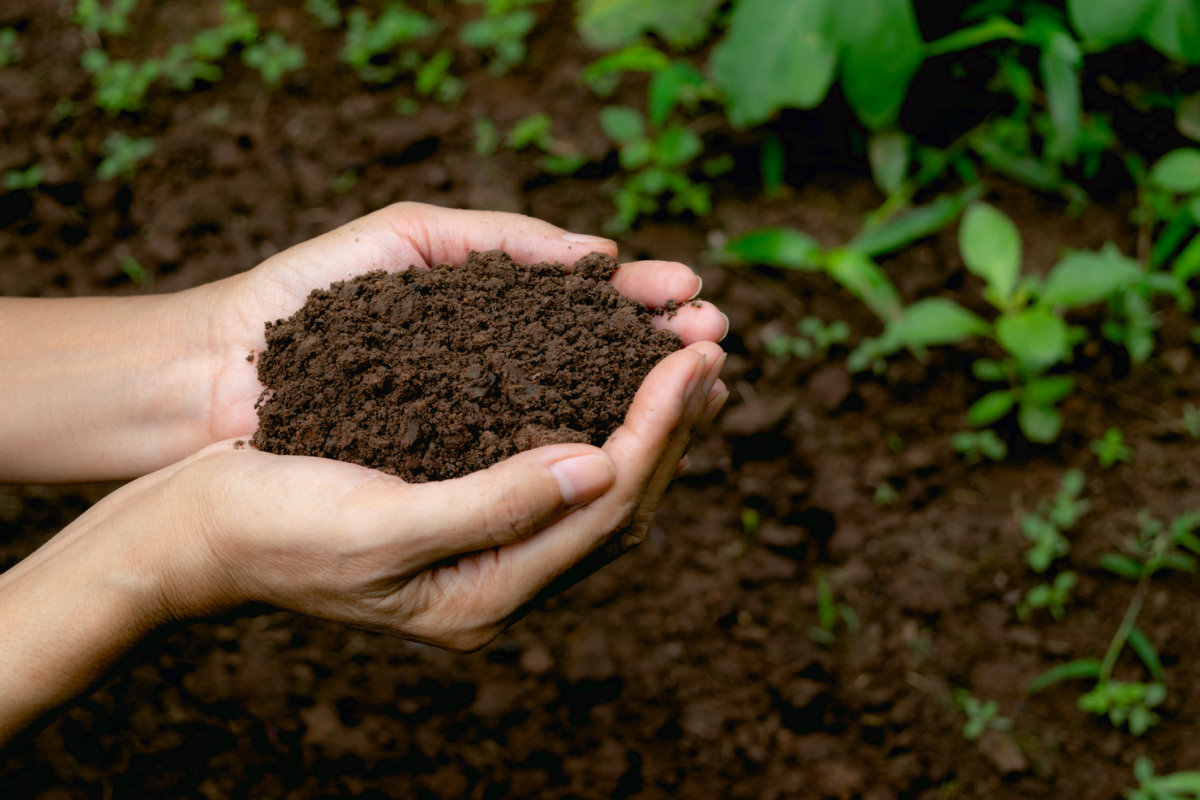
By Social Shava
SOIL is not an inert growing medium, it is a living and life-giving natural resource. It is the home of billions of bacteria, fungi and other microbes that are the foundation of an elegant symbiotic ecosystem.
Profitable and sustainable agriculture is hinged on a healthy soil that is home to a variety of soil microbes which help to enrich the soil with essential nutrients for bountiful crops. Soil health determines both the quantitative and qualitative aspect of the yield. It is, therefore, imperative to underscore the need to prioritise soil health in farming operations so that the land continues to be productive from generation to generation.
Soil health at farm level is influenced to a larger extent by human activities and the practices farmers adopt in their operations.
A culture of adhering to good agronomic practices helps in achieving a healthy soil that sustains crop growth and further helps in mitigating the effects of climate change by capturing and storing significant levels of carbon from the atmosphere. Poor management of the land resources in farming increases the emission of greenhouse gases consequently contributing to global warming. This article therefore seeks to unbundle soil health, its significance, how to maintain it and the consequences of failing to maintain it.
Soil health in simple terms is the capacity of the soil to function as a living system that sustains optimum agricultural production without leading to detrimental environmental outcomes.
Intensive agriculture has helped in feeding the ever-growing human population, but on the contrary, it has led to increased soil disturbance, depletion of organic matter and overuse of inorganic fertilisers.
With the global economic recession currently being experienced, crop yields are decreasing sharply as the cost of production is increasing beyond the reach of many farmers as intensive farming makes the soil dependent on expensive inorganic fertilisers.
Pririotising soil health in farming operations help to save money on crop inputs as soil fertility is kept at its optimum and ultimately improves the resiliency of the land.
To ensure soil health, farmers need to consider minimum soil disturbance, maximum soil cover and maximum biodiversity as the key pillars for maintaining soil health.
Excessive mechanical and chemical application may help to boost crop production, but it can lead to soil compaction issues, loss of soil structure, poor infiltration and decreased soil biological activity. Once the soil has poor infiltration, run off is increased and chemicals find themselves in rivers and dams leading to water quality issues and loss of aquatic life. Making the soil more dependent on heavy machinery, inorganic fertlisers and pesticides has made agriculture a very expensive venture that requires a huge capital outlay, making it difficult to feed the rising human population in developing countries.
Additionally, crops cannot thrive in compacted soils as root development is compromised exposing them to abiotic stress due to drought conditions often experienced every season.
Minimum soil disturbance is, therefore, of fundamental importance as it maintains a good soil structure that allows easy root penetration into the soil, good water infiltration and proper functioning of soil microbes.
Minimising soil disturbance helps to keep the soil porosity at its maximum enhancing aeration that supplies oxygen to microbes for decomposition of organic matter into humus. Ploughing the whole land aids in the release of carbon dioxide into the atmosphere leading to global warming.
With respect to reduced tillage, farmers should consider using machinery that only disturbs land where they want to plant their seeds. Such equipment is now available, suitable for both large scale farmers and resource constrained communal farmers.
Land that is less disturbed often has good drainage, which helps farmers with a good moisture bank and on the other hand poorly drained soil often leads to waterlogging that gives crops physiological stress and worse still leads to denitrification.
Denitrification is the conversion of nitrates from the soil into gaseous nitrogen which cannot be used by the plants and often happens when oxygen is driven out of the soil due to waterlogging.
Excessive use of pesticides and fertilizers also disturb the soil ecosystem by killing of beneficial organisms and decreasing soil biological processes that helps in the recycling of soil nutrients.
Soil cover helps in protecting the soil from wind and water erosion. Farmers who burn crop residues after harvesting are making a mistake of exposing their soil to wind and water erosion. This leads to loss of the productive topsoil as it is replaced by infertile subsoil. Soil cover acts as a mulch that enhances moisture retention and provides substrate for microbial activity resulting in good soil fertility. Cover cropping in winter helps to maximise living roots in soil in addition to providing soil cover.
A field with good soil cover in the form of crop residues often have organic matter that also helps as a soil pH buffer hence creating a good environment for crop and soil microorganisms. Soil that is too acidic makes crop growth unsuccessful as essential nutrients like phosphorus are not available and aluminum becomes toxic to plants. It therefore goes without saying that good soil cover is indispensable as it helps in creating a favourable growing medium for crops and a variety of soil enriching organisms. Mulch also helps in creating good soil temperature for growth of a diversity of organisms.
Soil is a complex ecosystem with different organisms living and interacting together, each providing different service to the ecosystem. There is need to keep maximum biodiversity through good farming practices such as crop rotation to build healthy soils and prevent diseases build up. The symbiotic interactions of legumes and Nitrobacter helps in enriching the soil with nitrogen that will benefit the next crop in a rotation system thereby lessening the use of chemical fertilizers.
Crop rotation system that uses both fibrous and tape root crops help in accessing more of the soil profile and break up compaction issues and help cycle soil nutrients. There is also need to integrate crop farming with livestock rearing as livestock helps in the breaking down of plant residues into organic forms of nutrients that are basically urine and manure. Besides helping to diversify the economic income of the farm, livestock enhances biological activity in the soil by helping to inoculate the soil with beneficial microbes.
The overarching goal of feeding the rising population at a profit can, therefore, be achieved sustainably by religiously following good agronomic practices and taking a systems approach in managing the soil.
Social Shava is an agronomist with Agriseeds.
Word from the market is a column produced by the Agricultural Marketing Authority (AMA) to promote market driven production. Feedback cchiduku@ama.co.zw or WhatsApp +263781706212.





